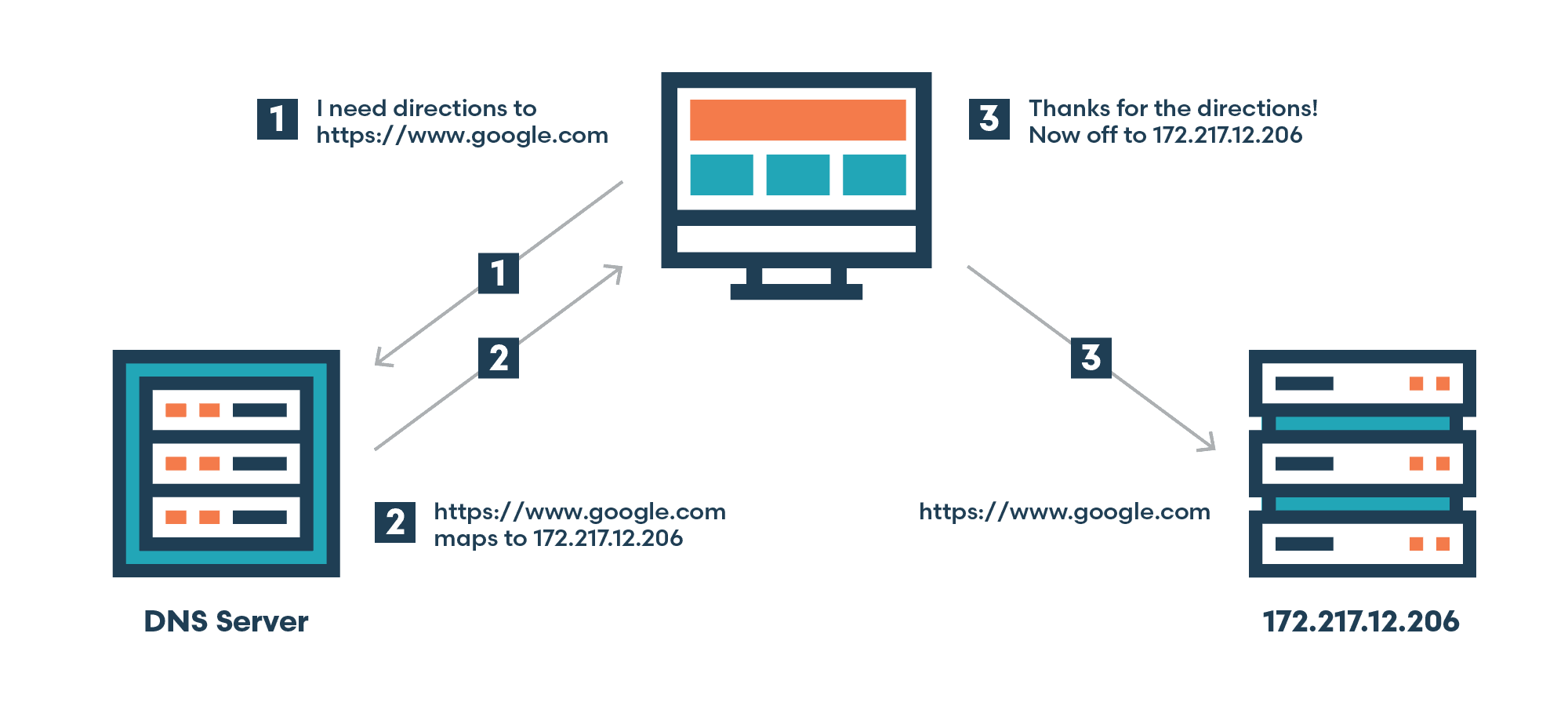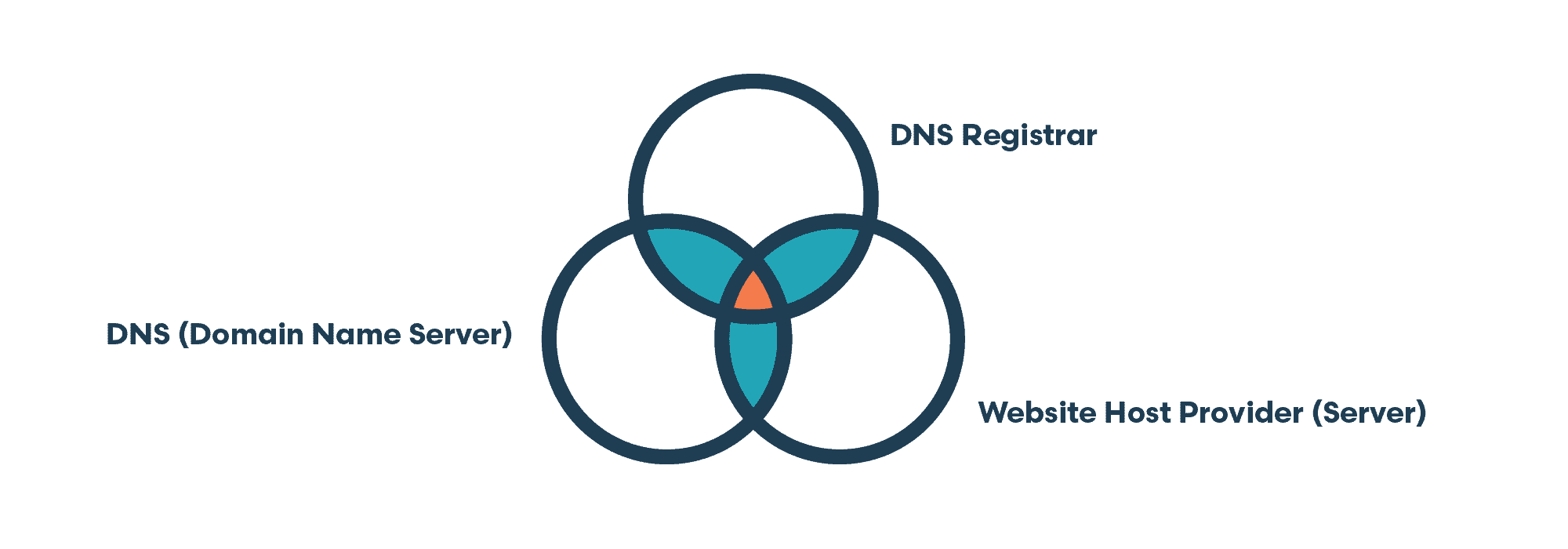The Ultimate Guide to Domain, DNS, Hosting and FTP

DNS, Domain, Hosting, FTP, Oh My! Where to start? What’s the difference between all the different logins related to my website? What do all these acronyms stand for? Stick with us and don’t be embarrassed; these things are hard to navigate even for technical people.
Introduction
If you’re in a marketing or sales position (heck…even a business owner) and in charge of leading a website project you’ll need to know or have access to some or all of these items. If your company is large enough to have part time or an in house IT department, odds are they are already managing these items and can be a good resource to meet with to get started.
Here we will walk you through the foundations of these various components that ultimately make your website a reality. But if you’re at a dead end road with hunting down this information or you want to better understanding of how it all relates, keep on reading.
Domain (Registrar) Overview

Your domain name is the essence of your website. To your customers, it’s the URL they type to find you, or find when searching for you or your products/services — e.g. example.com, windmillstrategy.com.
You purchase your domain through a domain registrar, most often through some of the giants like GoDaddy, Network Solutions and now even Google Domains, to name a few. There are several other lesser known domain registrars, many of whom have consolidated to ultimately using GoDaddy or some of the other giants’ platforms and are essentially resellers.
We can’t talk domain names without mentioning ICANN, the non-profit corporation for domain name system management. You can find a deep dive on how the domain registration process works from ICANN here, but keep reading for the basics that you’ll need to know for practical use.
Quick Tip: We recommend purchasing your domain through a common registrar for service quality, ease of management and because people you work with (like an agency, for example) will have more experience and familiarity within the more known registrars. Plus, you’ll find way more help articles if you’re a do-it-yourselfer and need some help.
If you’re not sure where your domain is and can’t find any documentation internally, you can do a WHOIS lookup through a few tools, like the industry leader https://www.whois.com/. Start here; typing in your domain name will more than likely uncover the name of the person who is registered to a domain and with which domain registrar.
You can purchase a domain name from one registrar, and migrate or move it to another for a number of reasons. Most likely if you’ve moved a domain name it’s because you intentionally want to consolidate logins and services to one vendor. Keep in mind if you migrate a domain, save a copy of your current domain records and they will not migrate with your domain.
It’s Windmill’s position that your company should hold the keys to your domain. It’s the basis of your business online and without it you wouldn’t have a website or place to send customers. You should control it. Own it. Manage it (with the help of an agency or experts). If someone is managing this on your behalf, that isn’t a problem, but make sure you have ownership and are granting admin access to manage the domain on your behalf. We’ve heard more than a few stories of a disgruntled IT vendor not relinquishing access of the company’s domain name; not having ownership of your domain name could potentially lock you out of your website and/or email, which are of course business-critical assets.
No matter where you purchase your domain name from, there is an associated login on that site to manage your domains, renewals, domain sales, etc. When we are looking for your domain login, we’re ultimately seeking the login where your domain name is managed.
DNS (Domain Name System) Hosting Overview

DNS stands for Domain Name System and is how domains are translated into IP address (internet protocol). In general terms, each server has an IP address, which acts like a phone number of sorts for that server. The DNS acts like a directory and tells other servers that are requesting data to go look at a specific, defined server to find that data. It’s like a behind-the-scenes yellow pages for the web – when someone types a domain name (like windmillstrategy.com) into their browser, it looks up the DNS information that tells it which server houses the website for that domain name. Your DNS (hosting) is responsible for connecting your domain name to your web host IP address to find your site files. It can also route specific types of traffic to different servers. Typically email for your domain is handled through a separate server (via MX records), vs website traffic (which is routed by A records). TXT records, CNAME, SPF, and a few other types of DNS exist for other specific purposes.
Often, your DNS will be hosted through the same provider as your domain. This is the default setup in nearly all cases, unless you or an IT department have moved your DNS to be hosted elsewhere than where you purchased your domain. There are a number of reasons (which we won’t get into in this article) about setting up, managing and configuring your DNS to fit your business model and needs.
If your DNS is moved, you’ll need to hunt it down. DNS is the absolute minimum login required to take your website live if you’re going live with a new hosting environment. Essentially, when you want to launch a new website in a new hosting environment, you are logging into DNS and updating the directory to tell servers trying to access your data to go find that data at a new server (and thus new IP address).
When updating DNS, it can take up to 48 hours for the DNS records to update across the web to point requesting servers to the new IP address and data. We typically see DNS update within 6 hours, and sometimes much sooner depending on how quickly your DNS refreshes.
Helpful Note: A properly functioning DNS is critical for your domain and IT departments will closely guard a company’s DNS admin credentials. Aside from your website, other services like email rely on DNS to route incoming messages to the correct servers. Before any changes are made to DNS, we recommend that a screenshot or similar method be used to capture the “before” DNS settings in case the setting(s) ever need to be restored..
Hosting (Web Hosting) Overview

Hosting or web hosting is probably the part you’re most familiar with. It is physically where your website lives. You pay a bill annually or monthly for this service through a hosting provider.
Your site lives as a database and files that gets uploaded to your hosting server. The method to upload and update the files of your site are done through FTP (see below). If you move your site to a new host, you will upload the database and site files to that new hosting server, then update your DNS record(s) to point to the hosting server’s IP address.
Quick Tip: Don’t forget about site security using and SSL certificate (enabling this protocol: https://), or implementing a CDN for large or asset heavy websites to split up resources and increase page speeds.
FTP (File Transfer Protocol) Overview

FTP or File Transfer Protocol is the most common way to access and transfer files between computers, though there are other methods. FTP has built in access control to prevent unauthorized persons from adding, removing or transferring files. A more secure, encrypted transfer is referred to as SFTP, but the principles of both FTP and SFTP are the same.
FTP has less to do with how your website renders and appears, but with how to update and change your website. Sometimes FTP is locked down heavily so only certain IPs can access it in combination with the proper FTP credentials (login).
If you’re asked for your FTP credentials, it’s likely because we’re making changes to your existing website, or have a reason to access your existing website server. You can find your FTP credentials by contacting your hosting provider, or finding a self-help article online that will guide you where to look.
Putting It All Together

Now here is where it all comes together. One of your customers will type in (or find) your domain, which will connect them to your IP address via your DNS host. The DNS host will direct them to you web hosting server which will return your site files (aka your website). All of this happens typically before you even realize what has just happened in the background.
A Common Scenario: The Trifecta
Using unique vendors might rely on Google Domains as registrar, Cloudflare as DNS provider, and WP Engine for hosting. Using one shared vendor could leverage Network Solutions as registrar and DNS, then Amazon for hosting. In some cases a single vendor, like GoDaddy, might act as registrar, DNS provider, and host. There is no “right” way, and each vendor and service will have certain pros and cons that can be evaluated.
Still Stuck?
Watch this video below for two helpful tools that can help point you in a better direction in finding out who controls your domain and DNS.
The Bottom Line
It can be messy and complex to manage and find out who owns what and where things are when it comes to your website and domain. As a business, it behooves you to document all of these items for a number of reasons. Keep clear documentation of these items and logins so you and your successors have the keys to your website moving forward, and more importantly so your business can succeed online. Hopefully you found value in this article and came away knowing more than you did before reading!


